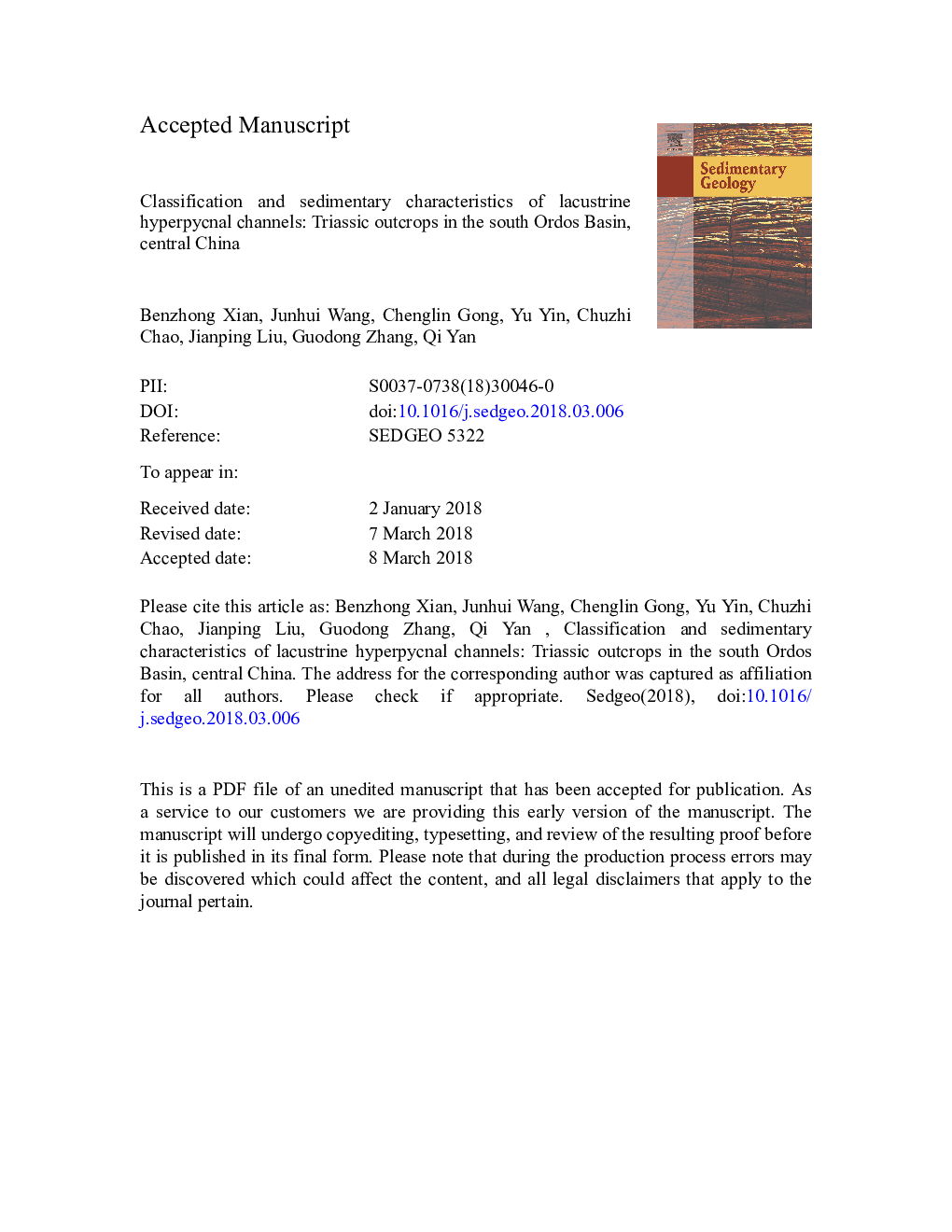| کد مقاله | کد نشریه | سال انتشار | مقاله انگلیسی | نسخه تمام متن |
|---|---|---|---|---|
| 8908515 | 1635995 | 2018 | 55 صفحه PDF | دانلود رایگان |
عنوان انگلیسی مقاله ISI
Classification and sedimentary characteristics of lacustrine hyperpycnal channels: Triassic outcrops in the south Ordos Basin, central China
ترجمه فارسی عنوان
طبقه بندی و خصوصیات رسوبی کانال های پرکالری لکورسنت: خروجی های تریاس در حوضه اروگوئه جنوبی مرکزی چین
دانلود مقاله + سفارش ترجمه
دانلود مقاله ISI انگلیسی
رایگان برای ایرانیان
کلمات کلیدی
موضوعات مرتبط
مهندسی و علوم پایه
علوم زمین و سیارات
فرآیندهای سطح زمین
چکیده انگلیسی
Subaquatic channels are known as active conduits for the delivery of terrigenous sediments into related marine and lacustrine basins, as well as important targets for hydrocarbon exploration. Compared to submarine channels, lacustrine subaqueous channels created by hyperpycnal flows are understudied. Using well-exposed outcrops collected from three different locations in the southern Ordos Basin, central China, morphologies and architecture of a channelized hyperpycnal system were studied and classified. Six facies associations represent sedimentary processes from strong erosion by bedload dominated hyperpycnal flows, to transitional deposition jointly controlled by bedload and suspended-load dominated hyperpycnal flows, finally to deposition from suspended-load dominated hyperpycnal flows. On the basis of channel morphologies, infilling sediments and sedimentary processes, the documented channels can be classified into four main categories, which are erosional, bedload dominated, suspended-load dominated, and depositional channels. In very proximal and very distal locations, erosional channels and depositional channels serve as two end-members, while in middle areas, bedload-dominated channels and suspended-load dominated channels are transitional types. Erosional channels, as a response to strong erosion from bedload dominated hyperpycnal flows on upper slope, were mainly filled by mud interbedded with thin sand beds. As flow energy decreases, bedload dominated channels develop on middle slopes, which are characterized mainly by under- to balanced sediment infillings with cross-bedded sandstones and/or minor massive sandstones. Compared to bedload dominated channels, suspended-load dominated channels mainly develop in deeper water, and were filled mainly by massive or planar-laminated sandstones. Depositional channels, as a response to suspended-load dominated hyperpycnal flows in deep-water areas, are characterized by thin-medium bed classical turbidites with Bouma sequences and thin- to thick massive sandstones. Such evolution patterns of hyperpycnal channel systems are ascribed to the progressive decrease in flow capacity of hyperpycnal flows, and provide an adequate explanation for the basinward channelization behavior of hyperpycnal systems.
ناشر
Database: Elsevier - ScienceDirect (ساینس دایرکت)
Journal: Sedimentary Geology - Volume 368, June 2018, Pages 68-82
Journal: Sedimentary Geology - Volume 368, June 2018, Pages 68-82
نویسندگان
Benzhong Xian, Junhui Wang, Chenglin Gong, Yu Yin, Chuzhi Chao, Jianping Liu, Guodong Zhang, Qi Yan,
